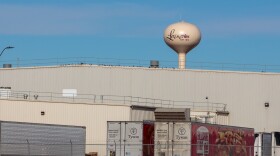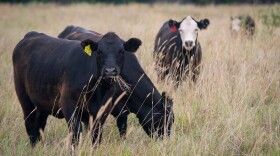The U.S. cattle herd has changed dramatically over the last four years, largely thanks to drought.
The supply of beef has been in free-fall. Perhaps you’ve noticed sky-high prices for hamburger and steak.Ranchers are moving cattle northward in search of water. Recently, Nebraska became the No. 1 state for cattle at feedlots – the final step before the slaughterhouse – surpassing the King of Beef state of Texas.
But this isn’t necessarily a temporary change. Even if the drought eases up, many experts say, the central and northern Plains look poised to raise more beef. Thanks to water issues and access to inexpensive cattle feed, ranchers and feedlots there are in position to capitalize.
The USDA tracks what’s called the Cattle Inventory, the number of beef cows that have calved, to peer in to the future. The Cattle Inventory represents the numbers of cows available to grow the herd.
As you can see, the Cattle Inventory is has grown over the last four years in Nebraska, the Dakotas and Montana. While Texas is still home to the largest Cattle Inventory, it lost 24 percent of its herd during the drought, which could have a long term impact.
What does the future of beef look like in your state?
Check out this map:







